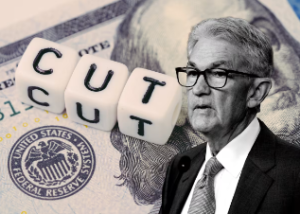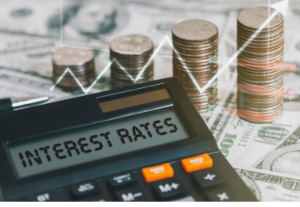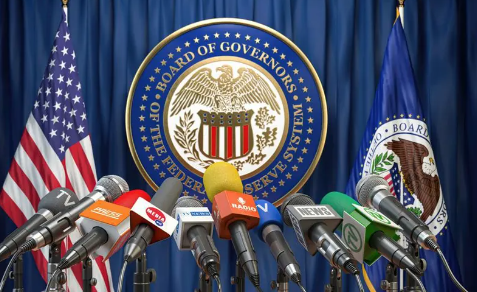Washington, D.C., September 2024 – The financial world is poised on the edge of anticipation as the U.S. Federal Reserve gears up for its first interest rate cut in over a year. As markets rally and economists debate, the key question isn’t just how deep the cut will be, but what it signals for the future of the economy and global markets.
A Pivotal Moment for U.S. Interest Rates
The Federal Reserve’s decision this week is monumental. It comes after a period of aggressive rate hikes that began in March 2022 to curb runaway inflation. Over the next 18 months, the Fed raised rates multiple times, with some increases as high as 75 basis points. By mid-2023, interest rates had reached their peak at 5.25% to 5.5%—a 23-year high.
Now, with inflation cooling and economic data showing signs of stabilization, the Fed is expected to reverse course and implement its first rate cut since this tightening cycle began. However, the burning question on everyone’s mind is: Will the Fed ease rates by 25 or 50 basis points?
The Market Awaits a Clear Signal
As the Federal Reserve begins its highly anticipated two-day meeting on Tuesday, all eyes are on Chair Jerome Powell. A 25-basis-point cut seems likely, but some analysts believe a more aggressive 50-basis-point reduction could be on the table to stimulate growth.
“This week is like Christmas for investors,” said Sarah Min from CNBC, referring to the excitement and potential market moves ahead. “The real story is not just the size of the cut, but where rates will go next.”
The stock markets reacted in advance. On Friday, the S&P 500 climbed 0.54%, the Nasdaq rose 0.65%, and the Dow Jones surged 0.72%, marking their best week of 2024. Investors are hopeful that a rate cut will breathe new life into the markets, but volatility could lie ahead as uncertainty remains around future Fed moves.

What Happens After the First Cut?
This first interest rate cut will mark a turning point in U.S. monetary policy, but the trajectory that follows is still unclear. Will the Fed follow up with more cuts, or will it proceed cautiously?
“Given the uncertainty around the economic outlook, we doubt the Fed will reveal much about its long-term plans,” said Aditya Bhave, U.S. economist at Bank of America.
Economists argue that the central bank’s future moves will be critical. An overly aggressive cutting cycle could signal a downturn in the economy, while a more measured approach could stabilize growth.
The next few months could see the Federal Reserve balancing on a tightrope, trying to prevent either a recession or a sluggish economy that would hinder growth.
Global Markets Brace for Impact
The Federal Reserve’s decisions resonate far beyond the U.S. borders. As the world’s largest economy shifts its monetary policy, global markets are preparing for potential ripple effects. In Asia, key markets, such as Hong Kong’s Hang Seng index, dipped on Monday, while Australia’s S&P/ASX 200 inched up slightly by 0.36%.
China’s economy remains a wildcard in this global equation. Recent data from the National Bureau of Statistics showed a slowdown in retail sales and industrial production, adding to concerns about the Chinese economy. Weak consumption, particularly due to the country’s real estate sector struggles, is dampening growth and could affect global markets.

Bottom Line: Investors Must Tread Carefully
As the U.S. Federal Reserve gears up to cut rates, investors and market analysts are preparing for potential volatility. While the first rate cut will provide some clarity, the long-term path for U.S. monetary policy remains uncertain. Whether the Fed continues cutting rates aggressively or opts for a more cautious approach will shape the economic landscape for months to come.
The upcoming Federal Reserve meeting on September 17-18, 2024, is drawing significant attention, as it is widely expected that the Fed will initiate its first interest rate cut in over four years. After a prolonged period of rate hikes aimed at taming inflation, which saw rates soar to a 23-year high of 5.25%-5.50%, markets are now anticipating a shift in policy. There is a 65% chance of a 50 basis point cut, while a smaller cut of 25 basis points has a 35% probability.
The Federal Reserve’s decision to cut rates comes as inflation is stabilizing near its 2% target, and the labor market is showing signs of cooling. Economists suggest that this initial rate cut could signal the beginning of a series of reductions over the next year, potentially bringing rates down to 3.00% by the end of 2025.
The broader implications of this shift are significant. A reduction in rates may relieve pressure on sectors like housing, which has been heavily impacted by high mortgage rates, potentially improving affordability. Additionally, this move could mark a more synchronized monetary policy among global central banks, as Canada’s central bank has already initiated several rate cuts.However, the pace and extent of these cuts remain uncertain, with future moves likely to depend on labor market conditions and ongoing inflation dynamics. If the labor market deteriorates rapidly, more aggressive cuts could follow






